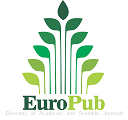Botanical Composition and Carrying Capacity in Various Agroecosystems on The Timor Island
Abstract
This research aims to know the type of vegetation, nutrient components of feed and carrying capacity based on agroecosystems on Timor Island conducted from January-March 2018 (transition from the rainy season to the dry season). The research location was chosen purposively so that those it represented the pasture were in the District of Belu, Malaka, and TTU; agriculture in the District of Kupang and Kota Kupang; plantation in Kupang District; and forests in TTS District. Forage samples were taken using the 1x1m2 quadrant method. The quadrant is thrown at random. All vegetation in the quadrant is cut and analyzed in the laboratory. Descriptive data analysis. The result is that the main vegetation types of Bali cattle consumption in pasture agroecosystems is natural grass with a nutrient composition of ash (9.9%), CP (5.7%), CF (38.5%), EE (2.2%), NFE (36.4%) and TDN (42.1%). Agriculture agroecosystem is ricestraw with a nutrient composition of ash (9.6%), CP (5.8%), CF (27.6%), EE (2.1%), NFE (48.8% ) and TDN (52.8%). Plantation agroecosystems is lamtoro with a nutrient composition of ash (13.6%), CP (12.0%), CF (20.4%), EE (3.3%), NFE (42.8%) and TDN (54.9%). Forest agroecosystems is kabesak with a nutrient composition of ash (8.6%), CP (11.5%), CF (26.9%), EE (1.2%), NFE (44.2%) and TDN (53.1%). The carrying capacity of pasture, agriculture, plantation and forest in sequence are very high, namely 4.8 UT and CCI 0.4 with an average body weight of 229.3 kg; 5.6 UT and CCI 0.6 with an average BB of 188 kg; 6.8 UT and CCI 0.7 with an average BB of 227.5 kg; and 5.8 UT and CCI 0.7 with an average BB of 194.9 kg. The entire agroecosystem area on Timor Island is classified as a very critical area.















